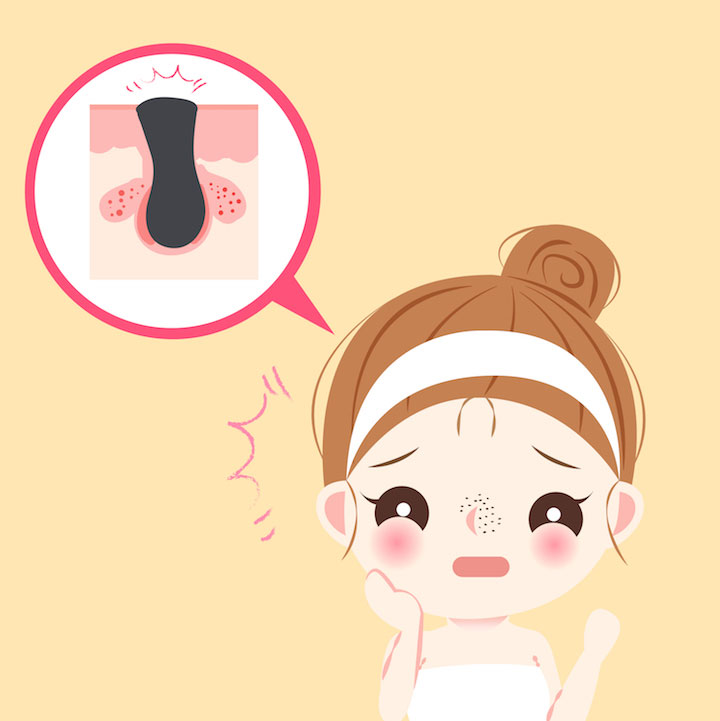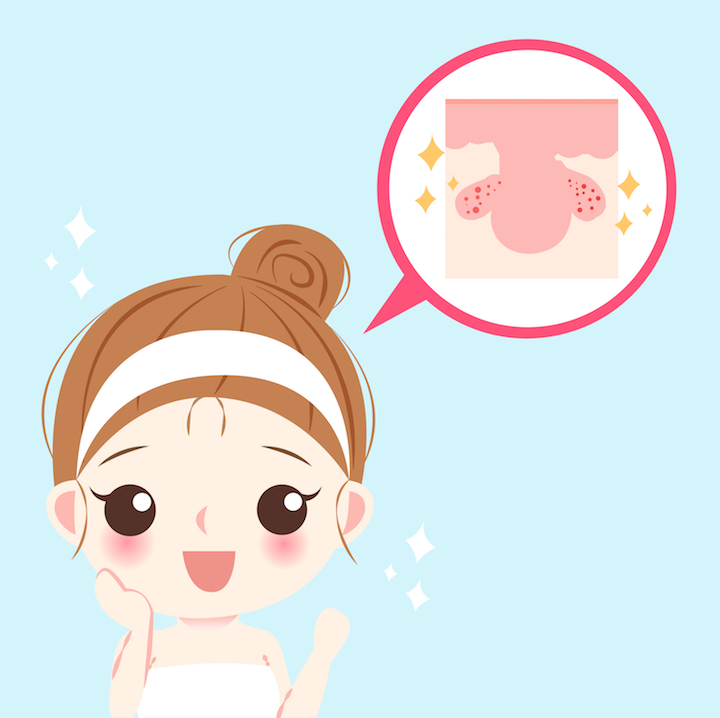Probably one of the biggest skincare questions out there are how to deal with blackheads — those dark little clogged pores on your face that you can’t stop obsessing over. Well, to treat blackheads, we need to know exactly what they are. Here, a quick primer.
Is there anything more annoying than blackheads? I don’t think so. Blackheads are one of the most common skincare complaints, yet there are a lot of misconceptions about exactly what blackheads are and how we can get rid of them.
Let’s dive in, shall we?
What exactly is a blackhead?
During my research for this post, I was surprised to find out that blackheads are actually a form of acne. What?! Yeah. Basically, they are clogged/impacted hair follicles that are full of dead skin cells, oil, and sadness.
To break it down, each hair follicle on our face (and there are a TON) contains one hair and a sebaceous gland. Every day, we shed dead skin cells and those get mixed in with our oils and bacteria and all sorts of nonsense. When that hair follicle gets “plugged” and the plug comes up to the surface of the skin, it turns into a comedone. If the skin over that clogged comedone stays intact and closed, it turns into a whitehead or acne (the other bane of my existence). But if the clogged comedone gets a little opening and comes into contact with oxygen, all of that gunk turns black, aka a blackhead.

So I learned that a) blackheads aren’t dirt like I originally thought, and b) they are not a completely separate thing from acne but instead are kinda the same thing. Learning this important distinction is really crucial for treating blackheads properly!
How are blackheads different from sebaceous filaments?
BUT. Blackheads are not to be confused with sebaceous filaments. Have you ever looked in the mirror and seen the black dots along your nose and went into a fit of rage because you thought you had a massive blackhead attack (or is that just me?) Well, sebaceous filaments are a completely normal part of the skin. It’s just the hair follicle that just so happens to have a bit of dead skin around it. They look pretty similar, but blackheads tend to be larger and a bit raised, whereas sebaceous filaments are flatter and smaller.
How do you treat blackheads?
So now that we all know the difference between blackheads, whiteheads, and sebaceous filaments, let’s talk about how we can get treat them.
When I was in my teens and early 20s, I had blackheads like crazy. I remember when those crazy (aka terrible) Biore pore strips were all the rage. Even though they were painful and didn’t really work, I gotta admit I got a lot of joy from seeing the little black dots on the strip. Thankfully, I know better now than to use those strips and employ other methods to keep blackheads at bay.
If you have blackheads, chemical exfoliants, namely BHAs, are going to be your best friend. There’s a reason why the COSRX BHA Blackhead Power Liquid is called “blackhead power liquid.” BHAs work by ungluing all of the dead skin, oil, and debris from your skin, which means that over time and with regular usage, all of the oil and dead skin that is clogging that hair follicle will dissolve and free the blackhead.

Blackheads WILL keep coming back, so if you have oily skin and are prone to getting blackheads, using BHAs regularly will help keep them at bay. For a 1-2 chemical exfoliating punch, follow up your BHA with an AHA to slough away the dead skin and debris once it’s been “unglued” from the skin.
My favorite BHA products are, of course, my bae the COSRX BHA Liquid, but I’m also obsessed with just regular ol’ 2% salicylic acid Stridex pads you can find at any drugstore. I also LOVEEEEE the COSRX Natural BHA Skin Returning A-Sol and the COSRX Salicylic Acid Cleanser. Keep in mind you don’t need to use ALL of these products to keep blackheads at bay — you can use one of these during your day or nighttime routine, after you wash your face and use a toner or mist. If you choose to use an AHA, make sure to use it after the BHA (and wait maybe 3 to 5 minutes in between each step).
How do you deal with these irritating clogged pores? Drop those tips in the comments!
Loading...
